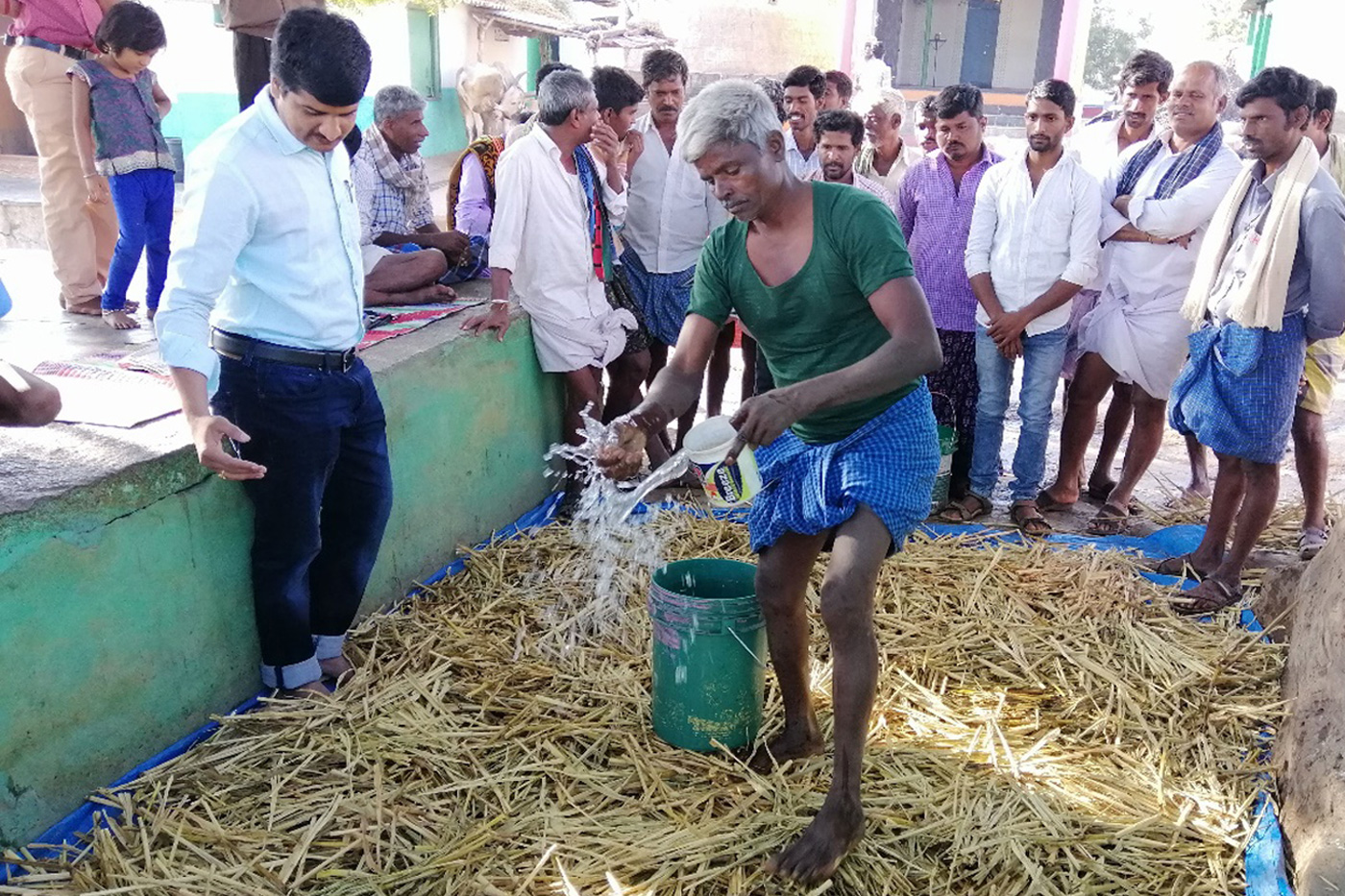Three weeks to make tastier, healthier crop residues for animal feed
- From
-
Published on
23.11.18
- Impact Area

A 21-day treatment process to improve the nutritive value as well as taste of crop residues as feedstock has been demonstrated in Karnataka, India.
Agricultural crop residues are the biomass left in fields after harvest. Crop residues are traditionally utilized as animal feed in many arid and semi-arid regions. Basically, they are low-density fibrous materials that are low in nitrogen, soluble carbohydrates, minerals and vitamins, and with varying amounts of lignin which acts as a physical barrier impeding microbial breakdown. Increasing livestock population and changing animal husbandry practices require a corresponding increase in the types of fodder needed. Along with a shortage of green and dry fodder, especially in the drylands, many smallholder farmers are also unaware of scientific methods of fodder production. For example, to meet nutritional requirements of livestock feed, the residues need processing and enrichment with urea and molasses.
Related news
-

Reinventing Kenya’s Snack Future with Dryland Grains
International Crops Research Institute for the Semi-Arid Tropics (ICRISAT)21.11.25-
Nutrition
-
Poverty reduction, livelihoods & jobs
Faces of Impact - Video Feature Story On a quiet backstreet in Mihango, Kenya, the…
Read more -
-

ICRISAT’s Solar-Powered Water Hyacinth Harvester Recognized Among India’s Top 100 Innovations of 2025
International Crops Research Institute for the Semi-Arid Tropics (ICRISAT)18.11.25-
Environmental health
-
Poverty reduction, livelihoods & jobs
ICRISAT's Novel Solar-Powered Water Hyacinth Harvester has now earned a place in the prestigious To…
Read more -
-

Australia partners with International Livestock Research Institute to upskill researchers from Africa and Asia
International Livestock Research Institute (ILRI)13.11.25-
Food security
-
Poverty reduction, livelihoods & jobs
Australia has joined forces with the International Livestock Research Institute (ILRI) to support th…
Read more -
